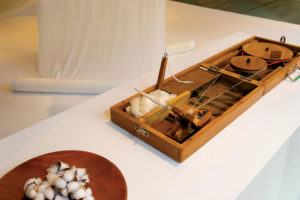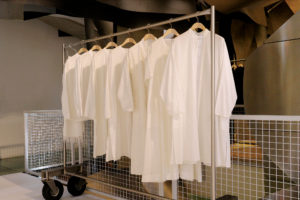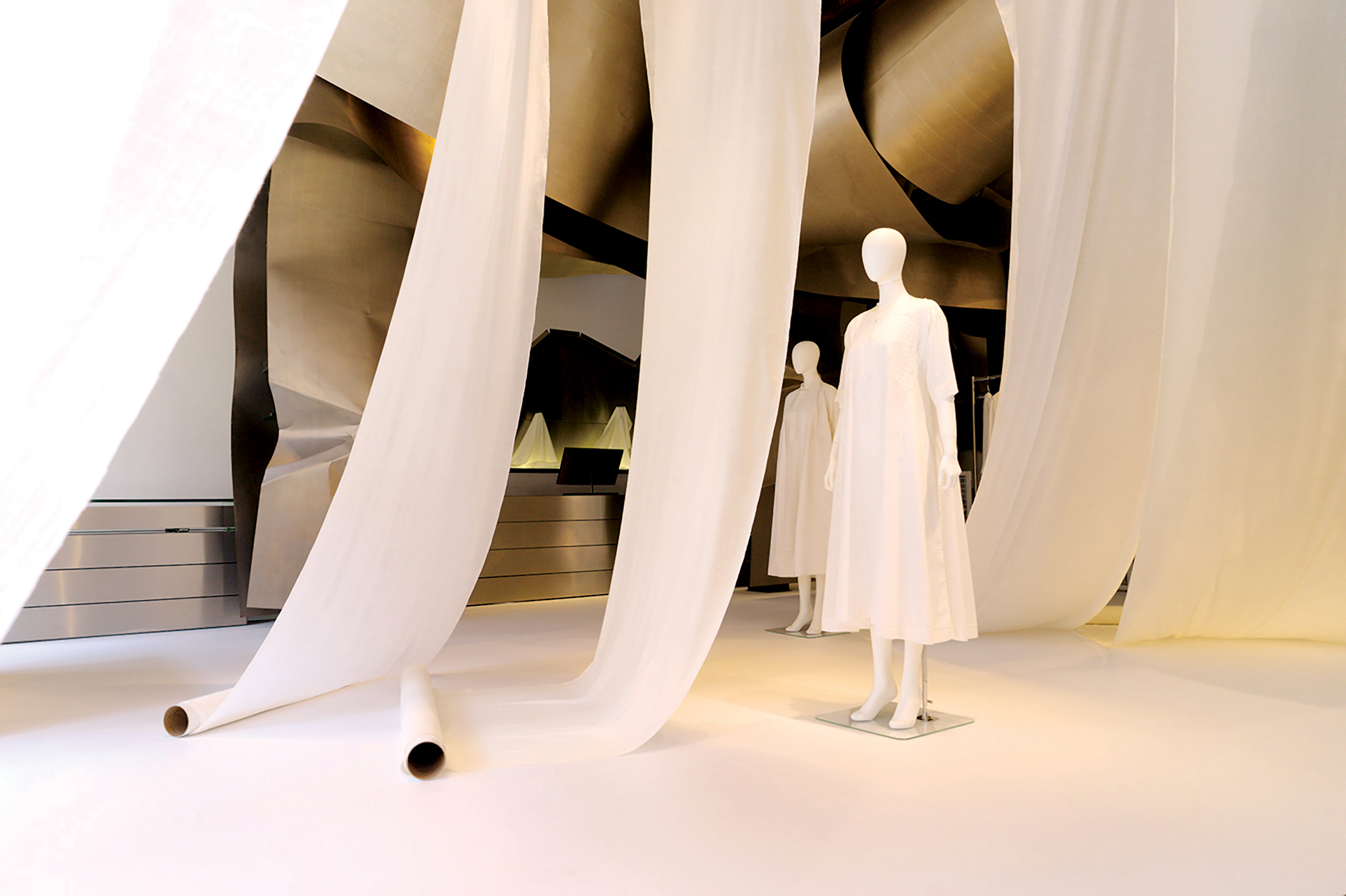Khadi is not just a relic of Gandhi’s Swaraj movement – fashion designers have created an ecosystem for it to become a part of everyone’s lives
The poetry that khadi is, does not remain a secret anymore. It has lent itself to designers around the world, giving them an opportunity to explore the age-old cloth and interpret it in their own way. From all the exhibitions that feature khadi as a material and technique, the most recent one by Issey Miyake at its New York store has got the crafts community to bring back the indigenous textile to dinner table discussions. Conversations that lead the aficionados to set up workshops for practising khadi weavers and enthusiasts to make trips to a Khadi Gram Udyog store.
The exhibition showcases work developed by Makiko Minagawa, creative director of HaaT by Issey Miyake and Martand Singh who is known as India’s first textile designer. Textiles and ensembles that are handspun and handwoven represent this collaborative project that the duo developed out of khadi.

An intimate experience like this is what is required for people to fully understand and appreciate the textile art that khadi is. Or how Himanshu Shani, the creative director at 11.11 clothing puts it, khadi as a way of living.
But our awareness of khadi is limited to buying a few metres that get converted into a kurta every few months. A handspun and hand-woven fabric, irrespective of its material, is what makes a khadi textile, a piece of knowledge that a lot of us struggle with when asked.
What makes khadi a relevant discussion in today’s day and age is its journey from being part of the Swadeshi movement to where it has reached now. A line-up of Indian and international designers have utilised the quintessence that khadi is, making it a lucrative business for anyone who wants to step into the industry. So much so that the revenues from khadi in the last financial year reached some Rs 215 crore, whereas KVIC has now set a target of Rs 5,000 crore by 2020.
All the work helmed by Mahatma Gandhi to inveigle it into the everyday lives of people has got us in a position where it has enabled various communities to accept the fabric in their own way. Some create their entire wardrobe out of khadi textiles, some cherish it as an heirloom item whereas for some it is a luxury.
While weavers were reluctant to both hand spin and hand weave the textile back in the 1920s to accommodate the market, the situation has not changed much after about a hundred years now. Better work prospects have led many weavers to switch industries. There may not be as many people practising the craft or with the required skill set, but the interest, demand and business for ‘Project Khadi’ have only gone high.

For Gandhi, spinning and weaving should happen on an individual level. Khadi may not have found that kind of fanbase but it is quite a hit amongst the young generation that prefers visiting Delhi Haat for its warmth in comparison to a Zara store. Until five years ago, there were not enough ‘brands’ to cater to the appetite people had for the textile. However, a number of designers who worked towards bringing khadi into everyday fashion have created an ecosystem where anyone with a taste for khadi can afford it. With Myntra, Ajio and other online retail points, it is more available and accessible than it was in its entire history.
Khadi, that is often associated with sustainability, is a flagbearer for any designer who wants to address the issue with the clothes they design. The relationship between the two has enabled India to become a nation with a large community of designers who work with khadi, not just for its beauty but its assurance of a safer future.
Khadi has only become more versatile with each passing year. Its identity — both political and social — is a measure of how we have progressed as a country in all these years. An insight into our past, present and perhaps, the future.





